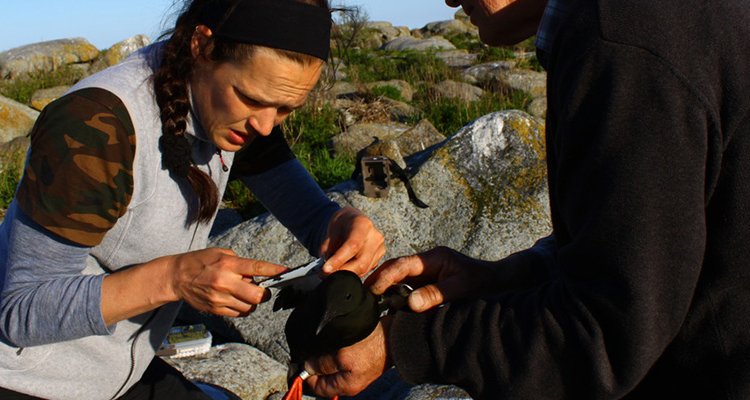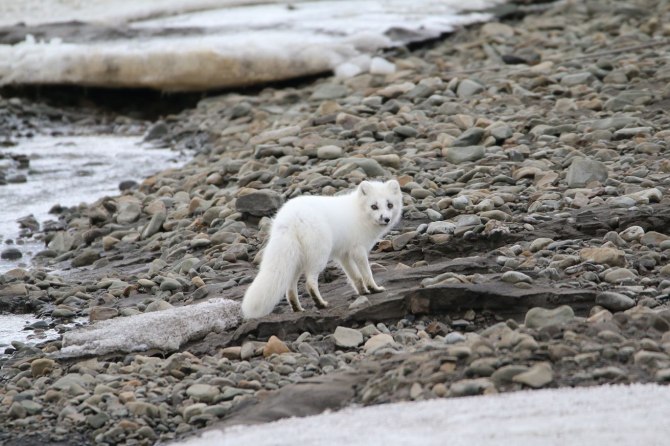
Project
Assessing impacts of anthropogenic perturbations on species distributions
Nature is experiencing increasing anthropogenic pressures; almost daily we receive news of declining species populations, contracting species’ ranges, and (local) species extinctions. Land use and landcover changes pose some of the largest threats to wildlife in forest ecosystems. This is exacerbated by a changing climate. However, amidst all this negative news, there are also positive voices to be heard about conservation. There are many examples of species recoveries, but unfortunately scientists warn that these are not nearly enough to stem the sixth mass extinction. The need for a good understanding of the roles that humans play in negatively or positively affecting species’ distribution is thus stronger than ever. Such understanding can aid evidence based conservation planning and management.
Description
As a landscape ecologist interested in wildlife conservation, it is my mission to understand the patterns and processes determining the distribution of species through space and time, and to help mitigate the negative effects of increasing anthropogenic impacts. At the heart of my research vision, and to fulfil this mission, lie several concepts and theories. First of all, ecosystems are complex and shaped by biotic and abiotic factors (ecological-complexity concept). Ecological complexity refers to the complex interplay between all living systems and their environment, and emergent properties from such an intricate interplay.
Assuming that the fundamental distribution ranges of species are shaped by climatic constraints, I study their realised distribution ranges that are commonly smaller due to additional (anthropogenic) constraints and ecological processes (niche theory). Most species are however able to withstand certain levels of perturbations within certain thresholds (resilience theory). Adaptive management strategies to manage some of these perturbations are needed in response to changing conditions (adaptive management concept). To date there is still a knowledge gap on which constraints play which roles in determining the distribution of species, especially at smaller spatial scales with a high resolution, and for the majority of species it is not known what level of perturbations they can withstand and what we – as nature conservationists or managers – can do to mitigate negative effects.
For instance, consequences of relatively recent anthropogenic impacts, such as habitat destruction, urbanisation, and, indirectly, introduction of alien species including pests and diseases, but also of climate change mitigation measures such as climate-smart forestry, on species distribution remain understudied. In light of these concepts and knowledge gaps, it is my vision to 1) increase our understanding of how anthropogenic impacts affect the ecological processes that determine the distribution of wildlife at different spatial scales, and 2) to use this increased understanding to enhance the effectiveness of wildlife conservation. I focus mainly on mammals and birds in cold climate regions, using modelling techniques as well as fieldwork.
Research questions that I am particularly interested in are:
- How do anthropogenic perturbations affect species’ distribution in boreal forest landscapes?
- Which life history traits of species make their presence vulnerable to anthropogenic perturbations?
- Have effects of anthropogenic perturbations on species distribution changed over space and time, and if so, are these effects predicted to change over space and time in future?
- Based on these research outcomes how can adaptive forest management strategies and wildlife conservation benefit species?
Publications
- Wang BX, Hof AR, Matson KD, Van Langevelde F, Ma CS. 2023. Climate change, host plant availability, and irrigation shape future region-specific distributions of the Sitobion grain aphid complex. Pest Management Science 79:2311-2324
- Wang D, De Knegt HJ, Hof AR. 2022. The effectiveness of a large protected area to conserve a global endemism hotspot may vanish in the face of climate and land-use changes. Frontiers in Ecology and Evolution.
- Hof AR, Hjältén J. 2018. Are we restoring enough? Simulating impacts of restoration efforts on the suitability of forest landscapes for a locally critically endangered umbrella species. Restoration Ecology. 26:740-750
- Hof AR, Rodríguez-Castañeda G, Allen AM, Jansson R, Nilsson C. 2017. The vulnerability of Subarctic and Arctic breeding birds. Ecological Applications. 27:219-234
- Hof AR, Jansson R, Nilsson C. 2012. How biotic interactions may alter future predictions of species distributions: future threats to the persistence of the arctic fox in Fennoscandia. Diversity and Distributions, 18:554-562

